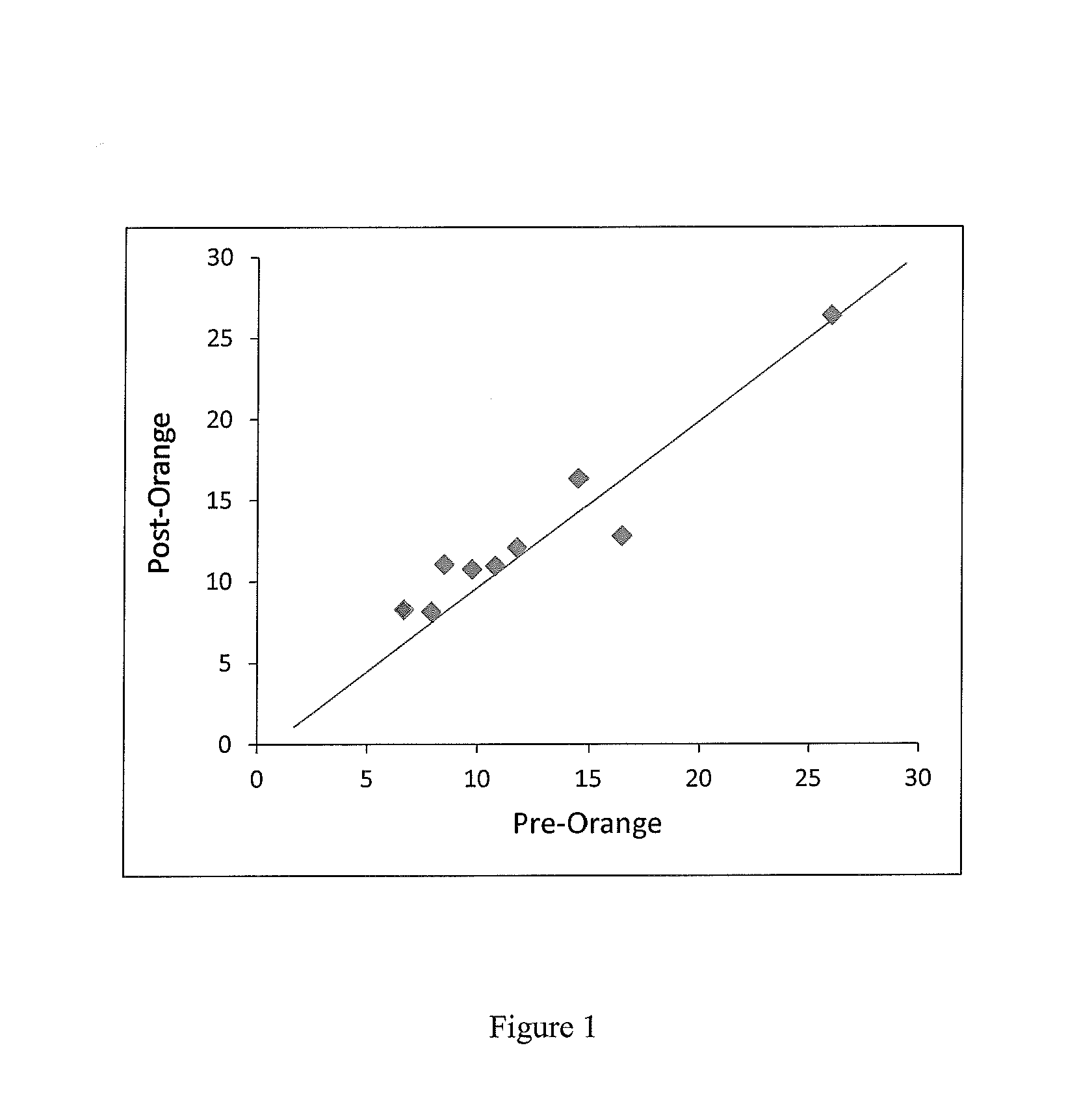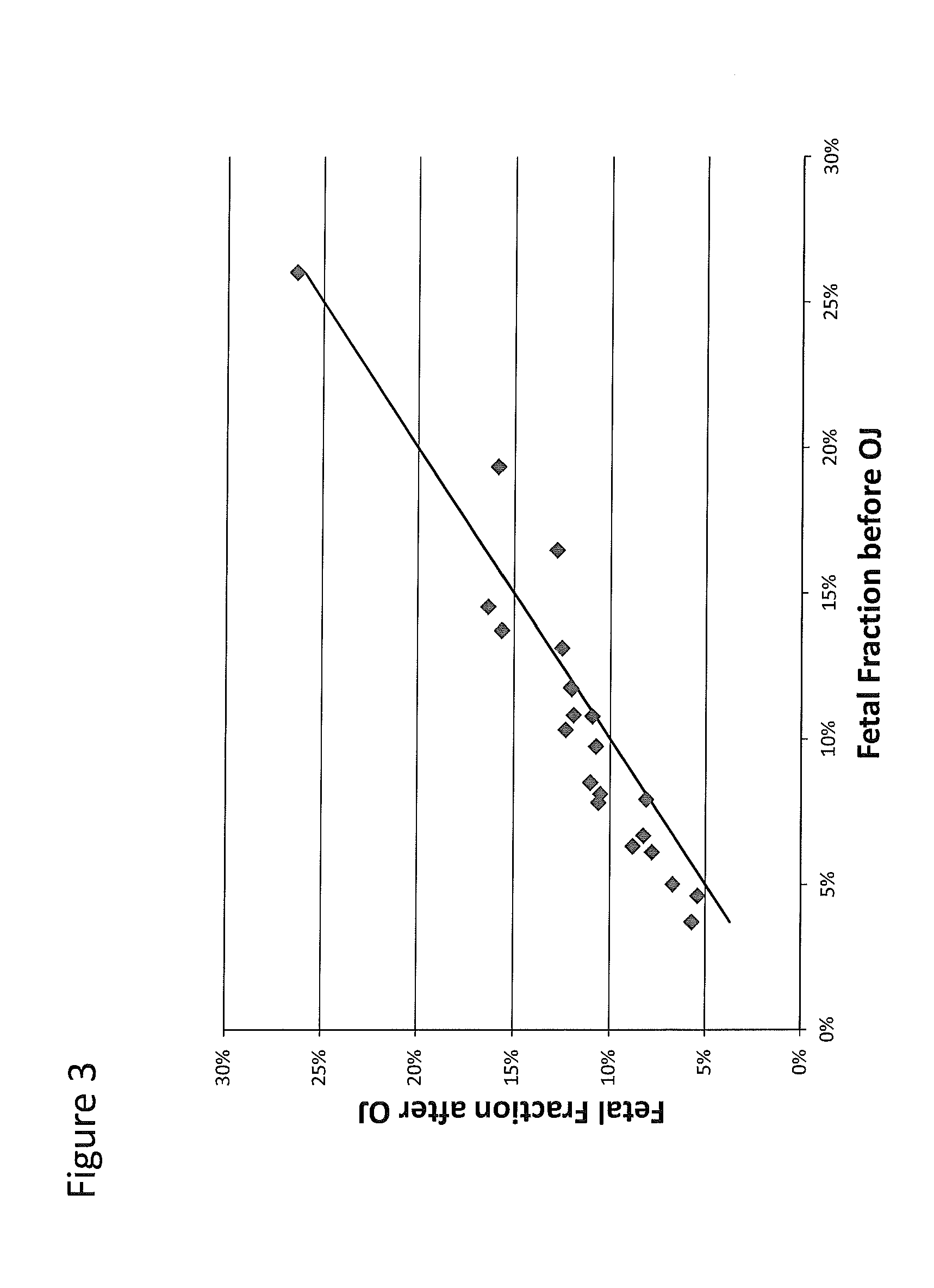Methods for increasing fetal fraction in maternal blood
a technology of maternal blood and fetal fraction, applied in biochemistry equipment and processes, edible oils/fats, food science, etc., can solve the problems of high variance of fetal fraction, poor accuracy, and inability to accurately predict the fetal fraction, so as to increase the fetal fraction
- Summary
- Abstract
- Description
- Claims
- Application Information
AI Technical Summary
Benefits of technology
Problems solved by technology
Method used
Image
Examples
example 1
[0150]A total of 40 mL of blood were collected from each subject into two to four CELL-FREE™ DNA tubes (STRECK); 20 mL were collected before drinking the orange juice (pre-OJ), and 20 mL were collected after drinking the orange juice (post-OJ) and waiting 20 minutes. The pre-OJ and post-OJ samples were treated as separate samples. Plasma was isolated from each sample via a double centrifugation protocol of 2000 g for 20 min, followed by 3220 g for 30 min, with supernatant transfer following the first spin. cfDNA was isolated from 7-20 mL plasma using the QIAGEN QIAamp Circulating Nucleic Acid kit and eluted in 45 uL TE buffer. Pure maternal genomic DNA was isolated from the buffy coat obtained following the first centrifugation, and pure paternal genomic DNA was prepared similarly from a blood, saliva or buccal sample.
[0151]Samples were pre-amplified for 15 cycles using 11,000 target-specific assays and an aliquot was transferred to a second PCR reaction of 15 cycles using nested pr...
PUM
| Property | Measurement | Unit |
|---|---|---|
| size exclusion chromatography | aaaaa | aaaaa |
| processing time | aaaaa | aaaaa |
| composition | aaaaa | aaaaa |
Abstract
Description
Claims
Application Information
 Login to View More
Login to View More - R&D
- Intellectual Property
- Life Sciences
- Materials
- Tech Scout
- Unparalleled Data Quality
- Higher Quality Content
- 60% Fewer Hallucinations
Browse by: Latest US Patents, China's latest patents, Technical Efficacy Thesaurus, Application Domain, Technology Topic, Popular Technical Reports.
© 2025 PatSnap. All rights reserved.Legal|Privacy policy|Modern Slavery Act Transparency Statement|Sitemap|About US| Contact US: help@patsnap.com



